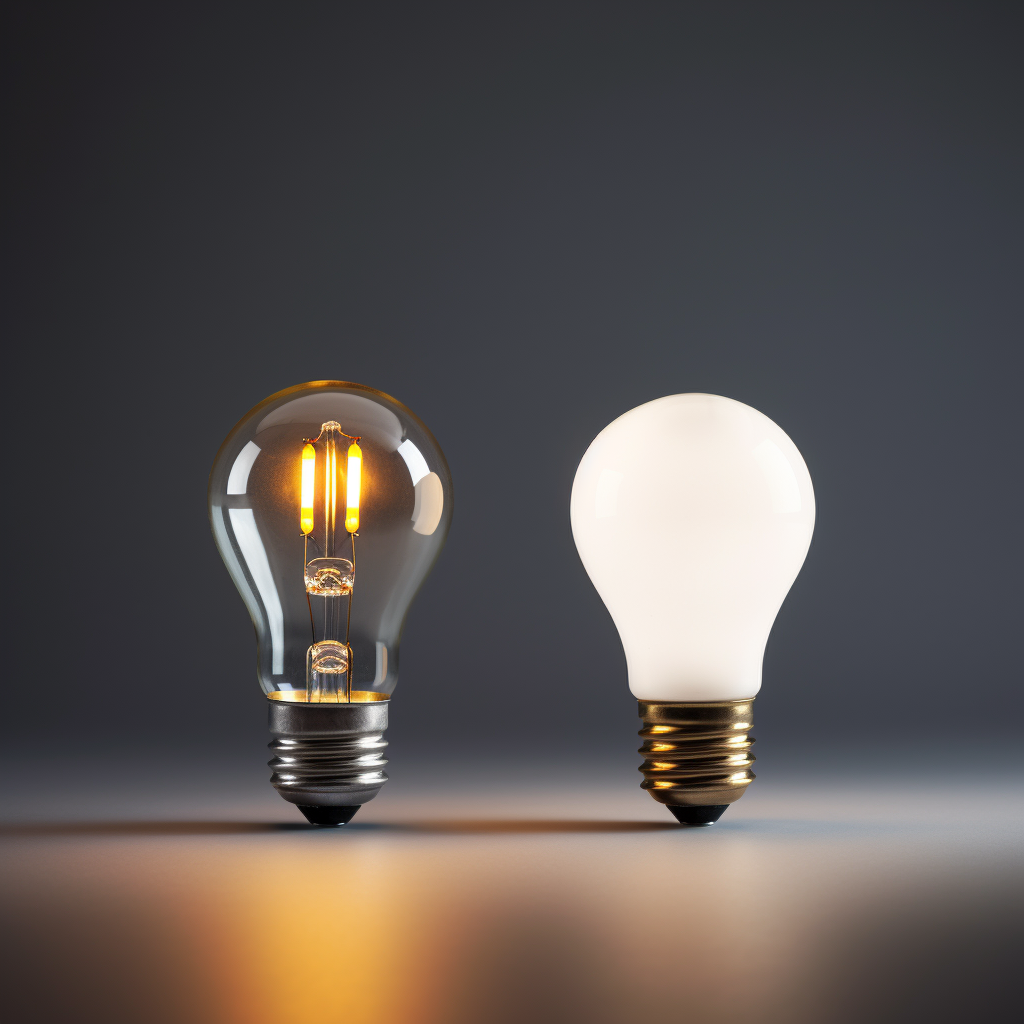In recent years, the debate over incandescent Vs. LED lighting has become increasingly relevant as more people seek efficient, eco-friendly solutions. As we navigate this shift, it’s clear that LED bulbs are steadily overtaking incandescent bulbs in popularity. This blog explores why LED technology is becoming the preferred choice for many homeowners and businesses.
Understanding the Basics: Incandescent vs. LED
To understand why LED is overtaking incandescent bulbs, it’s essential to understand the fundamental differences between the two. Incandescent bulbs, introduced in the late 19th century by Thomas Edison, heat a tungsten filament until it glows. While this process is simple and effective, it is notoriously inefficient. Much of the energy used by incandescent bulbs is wasted as heat rather than light.
On the other hand, LED (Light Emitting Diode) bulbs use semiconductor technology to produce light. When an electric current passes through the semiconductor, it emits photons, which generate light. This method is far more efficient because it converts most of the energy into light rather than heat.
Efficiency and Cost-Effectiveness
One of the most significant factors driving the popularity of LED bulbs is their efficiency compared to incandescent lighting. When comparing LED Vs. incandescent efficiency, the difference is striking. LED bulbs use up to 80% less energy than incandescent bulbs to produce the same amount of light. This drastic reduction in energy consumption translates into lower electricity bills and a smaller environmental footprint.
Additionally, LED bulbs have a much longer lifespan than their incandescent counterparts. While an incandescent bulb typically lasts around 1,000 hours, LED bulbs can last between 15,000 to 25,000 hours. This longevity means fewer replacements and less waste, contributing to both economic savings and environmental benefits.
Environmental Impact
The environmental benefits of LED lighting solutions further enhance their appeal. Incandescent bulbs contribute to higher energy consumption, increasing greenhouse gas emissions. Reducing energy use and carbon footprints has become a priority as the world becomes more conscious of environmental issues.
LED bulbs, by contrast, have a lower environmental impact. Their reduced energy consumption reduces electricity usage and lessens the demand on power plants, which often burn fossil fuels. Furthermore, LEDs are free of hazardous materials such as mercury, present in compact fluorescent lamps (CFLs) but not in traditional incandescent or LED bulbs. This makes LEDs a safer and more eco-friendly option.
Performance and Quality of Light
While efficiency and environmental impact are crucial, the quality of light produced by a bulb also plays a significant role in its popularity. LED lighting solutions offer several advantages in this regard. They provide a wide range of color temperatures, from warm to cool light, allowing users to choose the perfect lighting for any setting.
LEDs also provide better color rendering compared to incandescent bulbs. Color rendering refers to a light source’s ability to reveal the true colors of objects. LEDs generally have a higher Color Rendering Index (CRI), which means they can produce more accurate and vibrant colors. This feature is especially beneficial in settings where color accuracy is essential, such as art studios or retail spaces.
Technological Advancements and Smart Features
The rapid advancements in LED technology have also contributed to their growing popularity. Modern LEDs are not only more efficient but also more innovative and more versatile. Bright LEDs can be controlled remotely via smartphone apps, allowing users to adjust brightness, and color, and even set schedules. This level of control and convenience is something incandescent bulbs cannot offer.
In addition, LED technology continues to evolve, with innovations such as dimmable LEDs and color-changing options becoming increasingly common. These advancements provide users with more flexibility and customization in their lighting choices.
Conclusion
The comparison of incandescent Vs. LED bulbs show why LED lighting is more popular than incandescent bulbs. LED technology’s superior efficiency, longer lifespan, lower environmental impact, and advanced features make it the preferred choice for modern lighting solutions.
